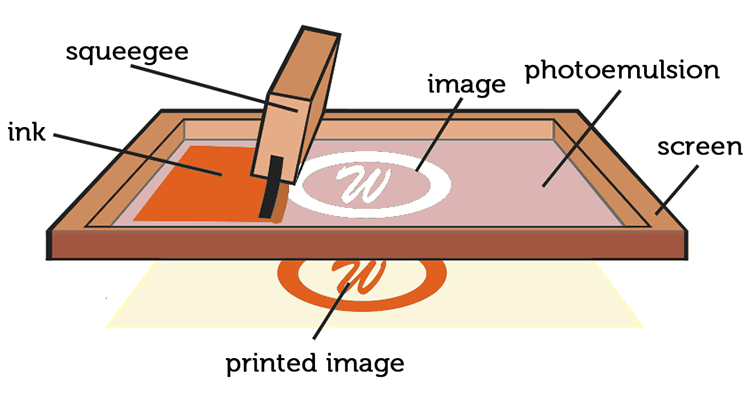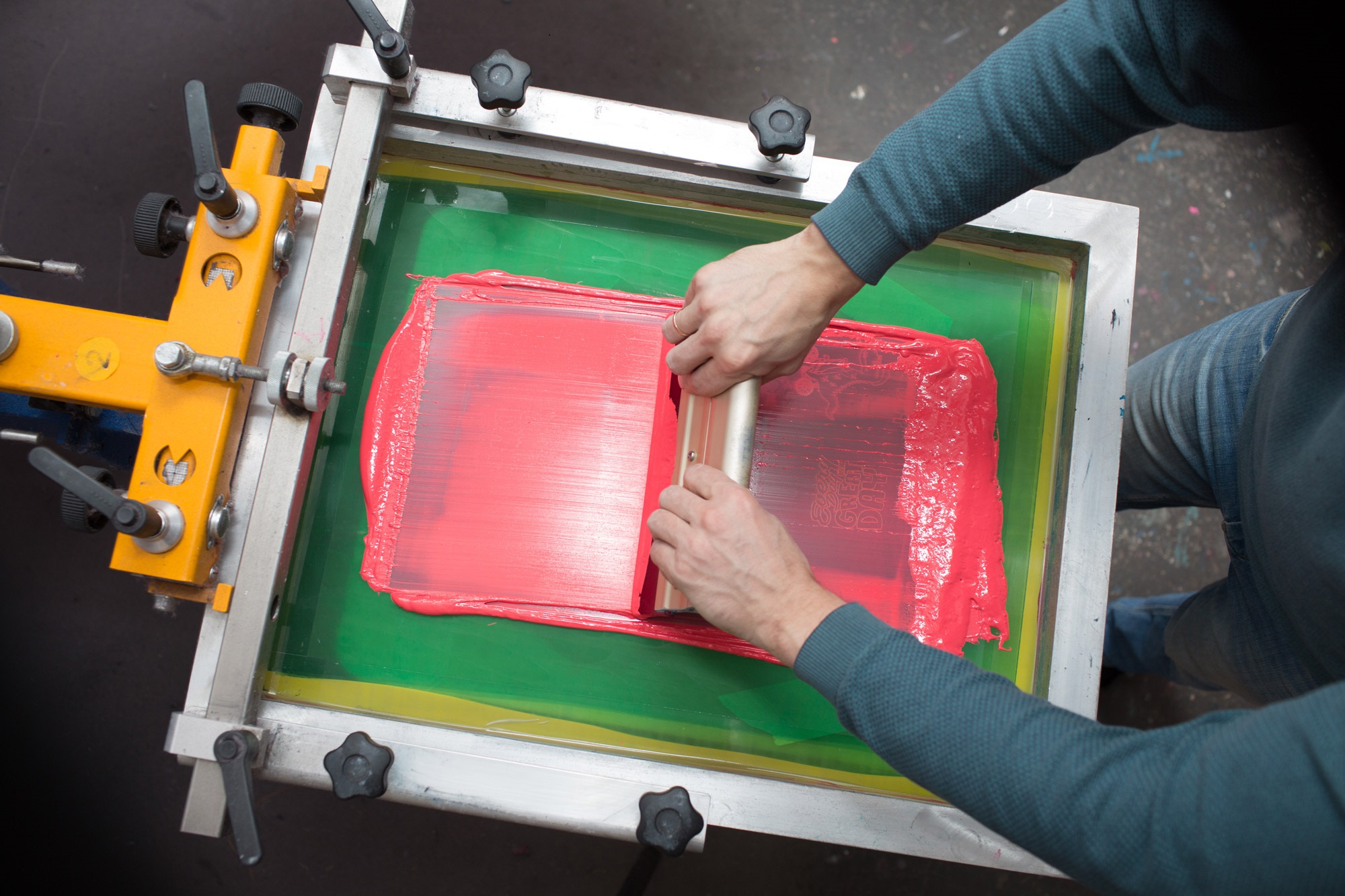Getting The Tx Tees To Work
Getting The Tx Tees To Work
Blog Article
Tx Tees Fundamentals Explained
Table of ContentsFacts About Tx Tees RevealedThe Ultimate Guide To Tx TeesSome Known Factual Statements About Tx Tees The Ultimate Guide To Tx TeesThe Ultimate Guide To Tx TeesHow Tx Tees can Save You Time, Stress, and Money.Tx Tees - Truths
Add up various other prices, like the number of utilities it takes to run the store and the expense of ink and solution per design. Take the print below.The emulsion needs to just be a couple of cents given that you 'd only need to layer one display for this job. So exactly how much should you bill per shirt to earn a profit? Typically, printers try to make up to 45% revenue on a print task. Below's a table to aid you determine that: total cost per product percent of preferred revenue as a decimal (instance:.25 or.45) revenue made per thing per work Currently allowed's speak about the profitability of DTF.

With DTF, you can print a handful of t shirts, or simply one. Both screen printing and DTF have their specific niches in the world.
Tx Tees Fundamentals Explained
The most effective means to know? Ask around and see what printing shop like your own are doing. custom t-shirt design. Attempt both out and see which you like better
When you're choosing what kind of printing technique to utilize for publishing your art work styles on your garments, it is essential that you understand the distinctions in between these 2 strategies so you can take full advantage of outcomes while lessening prices. Display printing is one of the most generally used technique for printing designs on fabrics.
DTG printing is additionally known as place or straight to garment printing due to the fact that it publishes just what is required as opposed to making a screen as screen printers do. https://www.storeboard.com/txtees. Display printing works by display filler squeegee screen printing ink display mesh screen, after that transferring the photo to garment using warmth and/or pressure
The DTG printer utilizes unique dye-sublimation inks that are applied right into a pre-designed image by an electronic printing system. The inks enter into the textile, allowing for vivid colors and phenomenal information. It's additionally called area or straight to garment printing because it publishes just what is needed rather than making a display as display printers do.
8 Easy Facts About Tx Tees Shown
It's much quicker - you can publish a fullcolor photo in mins, as opposed to hours for display printing. Second, there's no established up time or prices entailed - you can publish any kind of layout you such as, without having to produce a screen. Third, there's no waste - since screen printers screen print one design at a time, they have to evaluate each shade separately.
The paper is extremely expensive and can only be utilized once. Once it's printed on, it needs to be discarded. - The first acquisition cost is less than the upfront financial investment of DTG printers- You can publish multi-color styles one screen at a time rather of needing to print each color separately like DTG printing.

Tx Tees Things To Know Before You Buy
However, instead of utilizing screen mesh as screen printers do, color sublimation printers make use of laser technology to move your photos onto garments or paper. A warmth procedure moves the color from its solid-state directly into the gas phase which consequently merges it onto textile substratums when they are swiftly heated to high temperatures under high pressure.
Sublimation printing is green. It makes use of much less water than screenprinting, and because it doesn't involve making use of dangerous solvents, it's see this secure for all sorts of garments. The color sublimation inks are additionally odorless when cured, unlike screen printers that use hazardous chemicals during the screen printing process that leave behind an unpleasant smell.
They additionally conserve cash on pricey tools like exposure units because dye sublimation printers don't require a UV direct exposure device or a flash treatment stove that is commonly made use of in display printing (embroidery shop). What is straight to garment printing (DTG Printing)? DTG printing is a digital screenprinting process that publishes straight onto material utilizing specialized inkjet printers
Facts About Tx Tees Uncovered
DTG printing supplies lots of benefits over typical screenprinting, including the capacity to print photo high quality images, better color vibrancy, and the capacity to print layouts on darker fabrics. DTG printers function by heating the fabric ink until it transforms into a gas. The gas after that permeates the material, bonding with the fibers to create a long-term print.

Screen printers simply prepare their display after that begin printing until they run out of item or ink.- There is a large range of seasoned display printers around the world, which can be handy for newbies. - It's a slower procedure - display printers frequently have to wait on the ink to dry prior to they can publish the next shade- Display printers require manual work, so there's a greater discovering curve and it takes longer to produce a high-quality layout- Display printing isn't as accurate as DTG printing, so you might get some "bleeding" of shades from one part of the photo onto one more if not done effectively.
9 Easy Facts About Tx Tees Described
Rather of making use of screen mesh as display printers do, color sublimation printers use laser innovation to move your images onto garments or paper. A warm procedure transfers the dye from its solid-state straight right into the gas phase which consequently fuses it onto textile substratums when they are rapidly heated up to heats under high pressure.
Sublimation printing is eco-friendly. It utilizes much less water than screenprinting, and due to the fact that it doesn't include making use of hazardous solvents, it's risk-free for all sorts of garments. The color sublimation inks are additionally odorless when treated, unlike display printers that make use of harmful chemicals during the screen printing process that leave an undesirable smell.
They additionally save money on costly equipment like exposure systems considering that color sublimation printers do not call for a UV direct exposure device or a flash treatment stove that is generally used in screen printing. What is direct to garment printing (DTG Printing)? DTG printing is a digital screenprinting process that prints directly onto fabric using specialized inkjet printers.
Tx Tees - Truths
DTG printing supplies several advantages over conventional screenprinting, including the ability to publish photographic quality photos, better color vibrancy, and the capacity to print designs on darker textiles. DTG printers function by heating the fabric ink till it develops into a gas. The gas after that permeates the fabric, bonding with the fibers to develop a long-term print.
Report this page